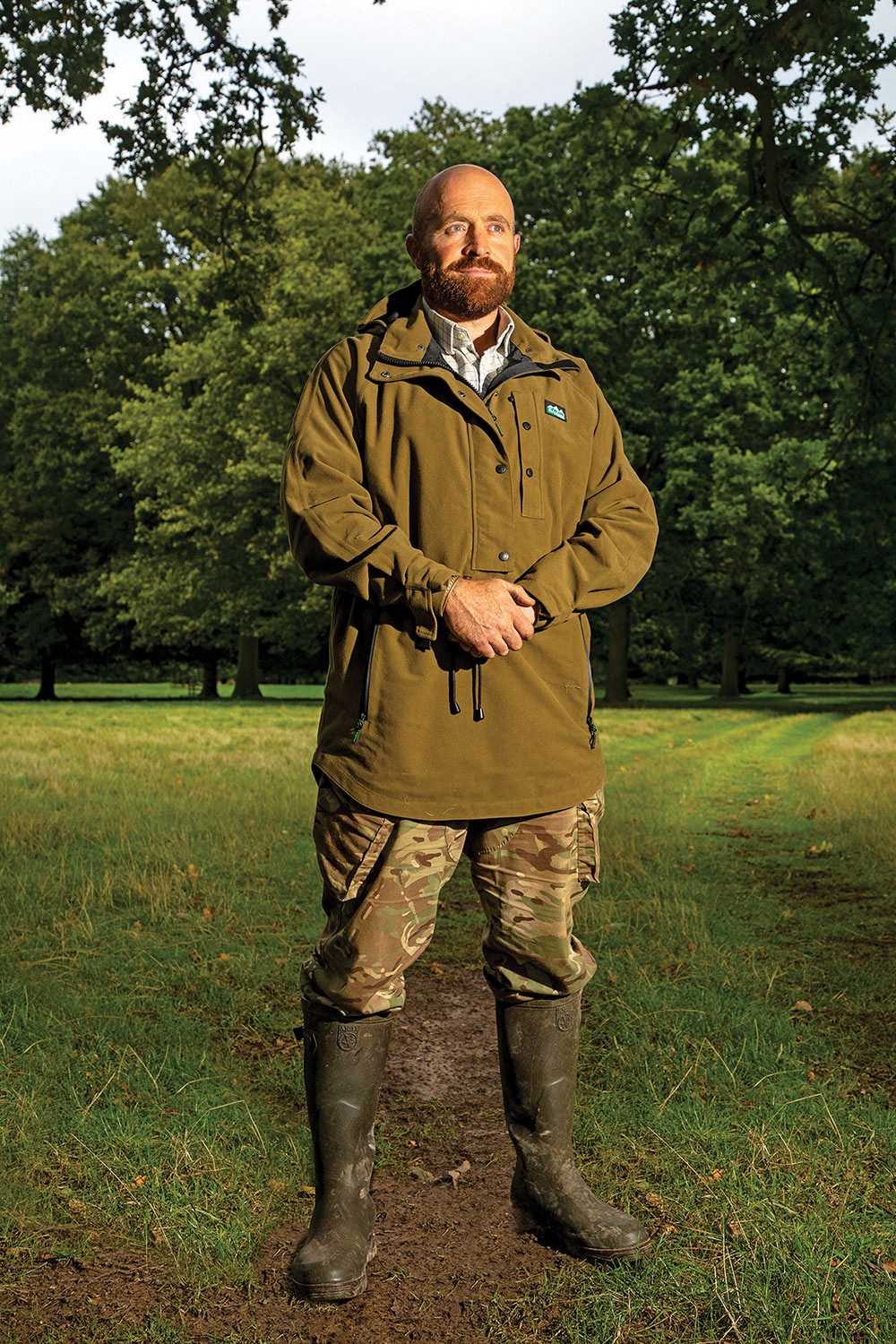
The natural wonders of Houghton Hall
The white fallow deer at Houghton Hall are one of the most distinctive sights in Norfolk, but they’re only part of a forward-thinking and sustainable approach to responsible game management
In 2016, the celebrated English sculptor and land artist Richard Long (the only artist to have been shortlisted four times for the Turner Prize) brought the artwork White Deer Circle to the grand setting of Houghton Hall. An installation of 16 enormous tree stumps with their roots turned towards the sky it’s a main attraction for the thousands of people who visit every year - but the famous white deer at Houghton have also taken it to heart and often relax there in the summer, in a place they’d never shown much interest in before.
There’s always been a deer park at Houghton Hall, and the original was laid out by the innovative landscaper Charles Bridgeman in the early 18th century. Gone was the formality of patterned parterres and precisely-angled avenues, and in came a more natural approach and informal style that incorporated elements from the surrounding wilderness.
Small wonder that he was also responsible for (re)designing the royal gardens at Windsor, Kensington Palace, Hampton Court, St. James’s Park and Hyde Park and spent 10 years as the Royal Gardener for Queen Anne.
Some of the trees he planted at Houghton Hall can still be seen today, and the deer love them almost as much as Head Gamekeeper and Deer Park Manager Robert Hall - who passes them all the time on his daily inspection of the park.
“Our white deer are really famous and many people think they’re albinos, but they’re really not that unusual,” he says. “White is quite common within the spectrum of fallow deer, and we now have the biggest herd in the UK.”
Originally bred by the 5th Marquess of Cholmondeley at the end of the 19th century, the deer were something of a Victorian vanity (possibly to reflect Houghton’s white cottages) but they now play an important part in the overall environment of Houghton Hall.
“I like to think of them as ornamental lawnmowers,” says Robert. “They’re brilliant at keeping the park grazed

and they keep the trees to a certain height. They’re pretty low-maintenance to be honest. We’ll give them some supplementary food during the winter - all of which is grown on the estate - but apart from that they’re pretty much self-sufficient.”
But there’s more to the deer park at Houghton than the 500 white fallow does, a figure which generally doubles annually. The organically-managed estate is also home to around 70 Japanese Sika deer, 150 elite red deer hinds, and a small herd of Père David deer - a rare species that’s native to China but only exists today thanks to zoos and estates such as Houghton.
“We’ve also got some Chinese Water Deer on the estate, but I’ve no idea how many of them there are,” says Robert. “They’re pretty elusive and they tend to keep to themselves, but I have 30 in the park at the moment.”
Originally from Woodbridge in Suffolk, gamekeeping is the only job Robert ever considered - and after a spell at Slane Castle in the Republic of Ireland and a number of estates in Suffolk he’s been on the Houghton estate for the last 25 years.



“I came here because it was a great opportunity and a really interesting challenge,” he says. “I’m totally in step with the ethos, passion, vision and direction of Lord Cholmondeley towards conservation and game management, and the deer park is part of a very sustainable and diverse farming enterprise.”
And although venison tends to get more than its fair share of bad press, it’s actually an extremely responsibly reared and produced (and woefully-overlooked) meat - being very high in protein, containing very little fat, and being incredibly lean. It comes as no surprise to learn that venison from the Houghton estate finds its way to some of the very best restaurants in London.
“People think that venison is elitist or that it’s difficult to cook, but that couldn’t be further from the truth,” says Robert. “It’s really not that different from beef or lamb - the only real difference is that our products haven’t come from halfway across the world.”
We’re currently coming to the end of the rutting season and it’s one of Robert’s favourite times of the year.
“I live on the estate and it’s fantastic to hear the deer at night,” he says. “The reds roar, the fallow deer grunt, and the Sika deer whistle. Even wild deer are attracted to Houghton during the rutting season. There’s no place they’d rather be. And neither would I.”
